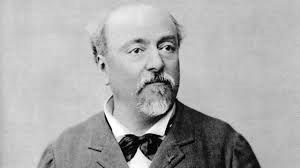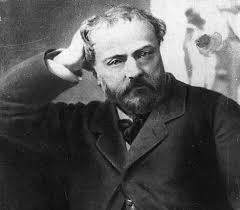Emmanuel Chabrier (1841–1894) was a French Romantic composer known for his vibrant harmonies, rhythmic energy, and creative innovations. Though his output wasn’t vast, his works left a lasting impact on French music, influencing composers like Debussy, Ravel, and Poulenc. Below are five of his finest compositions that showcase his artistry and creativity.
1. España (1883)
Perhaps Chabrier’s most famous work, España is a vivid orchestral rhapsody inspired by a trip the composer took to Spain in 1882. The piece captures the energetic spirit and colorful vibrancy of Spanish folk music, making it a favorite of orchestras around the world. Its catchy rhythms, bold melodies, and brilliant orchestration reflect the joy and excitement of Spanish dance forms like the jota and fandango.
The piece was groundbreaking in its use of rhythm and orchestration, influencing later composers, including Ravel and Debussy. Its infectious energy and lively atmosphere make España a perennial favorite for concertgoers.
2. Joyeuse Marche (1888)
Joyeuse Marche is another orchestral gem that perfectly embodies Chabrier’s lighthearted and joyful musical personality. The piece is full of humor, lively rhythms, and whimsical melodies, which reflect the composer’s characteristic charm and wit. Originally composed as a piano duet, Chabrier later orchestrated it, and it became a popular work in its own right.
Its lightness and buoyancy create an uplifting atmosphere, making it a concert favorite. The playful nature of the piece shows Chabrier’s unique ability to infuse joy and energy into his music.
3. Suite Pastorale (1888)
This orchestral suite is a collection of four movements, all derived from Chabrier’s earlier piano pieces, Dix pièces pittoresques. The Suite Pastorale is celebrated for its colorful orchestration, melodic beauty, and pastoral charm. Each movement evokes a different scene of rustic life, filled with vivid imagery and emotion.
The four movements—Idylle, Danse villageoise, Sous-bois, and Scherzo-valse—capture everything from peaceful countryside scenes to lively dances, showcasing Chabrier’s ability to blend rich harmonic textures with rhythmic vitality.
4. L’Étoile (1877)
Chabrier’s comic opera L’Étoile is a whimsical and humorous work filled with catchy tunes and witty libretti. Though not as widely known as his orchestral pieces, it is regarded as one of the most delightful examples of 19th-century French operatic comedy. The opera’s clever writing, vibrant orchestration, and sparkling melodies have earned it a growing following among opera enthusiasts.
The plot revolves around the absurd adventures of King Ouf, and the music is full of light, comedic moments, reflecting Chabrier’s genius for creating memorable, character-driven melodies. The overture, in particular, stands out for its lively rhythms and engaging themes.
5. Pièces Pittoresques (1881)
Pièces Pittoresques is a suite of ten piano pieces that stand among the finest examples of French piano music from the late 19th century. Chabrier’s use of bold harmonies, inventive rhythms, and delicate textures in this suite influenced many composers, including Debussy and Ravel. Though originally written for piano, some of these pieces, like those used in Suite Pastorale, were later orchestrated.
Among the most notable movements are Idylle and Sous-bois, both of which highlight Chabrier’s gift for lyrical, atmospheric writing. The entire suite demonstrates his ability to fuse the elegance of French music with his personal flair for inventive harmonies and melodic creativity.
Conclusion
Emmanuel Chabrier’s music is a delightful blend of vivid imagery, rhythmic vitality, and harmonic innovation. His works have earned a lasting place in the classical repertoire, from the lively and festive España to the whimsical charm of L’Étoile. These five compositions capture the essence of Chabrier’s talent and serve as a testament to his enduring influence on the world of music.
Whether in the concert hall or opera house, Chabrier’s music continues to enchant audiences with its originality, wit, and joy.


Comments are closed